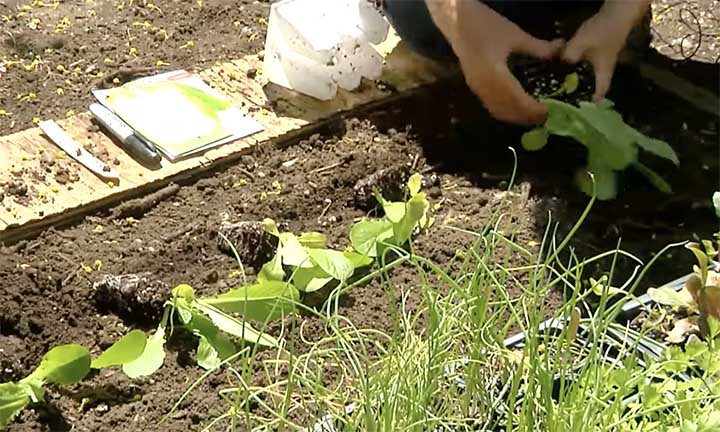Romaine lettuce, also known as cos lettuce, is known for its crunchy midrib and upright growth habit. It’s frequently used in Caesar and tossed salads but can also be thrown on the grill!
Along with being a delicious addition to the kitchen, it’s also a popular lettuce to grow at home. In my experience, romaine also tends to be rather easy and rewarding to grow.
Join me as I share what I’ve learned over the years regarding how to grow romaine lettuce.
Different Types of Romaine Lettuce
Whether you know it or not, there are many different types of romaine lettuce. This includes varieties with obvious physical differences as well as differences in disease resistance.
I’ve grown more than a dozen varieties of romaine, and these are some of my favorites.
Little Gem
Little Gem – Mini romaine-type heads that can be planted closer together than traditional varieties
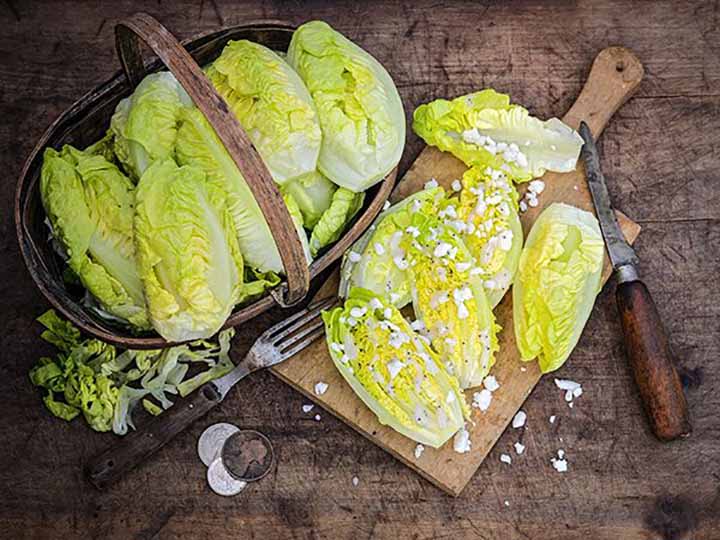
Flashy Trout Back
Flashy trout back – Green heirloom variety with red speckles
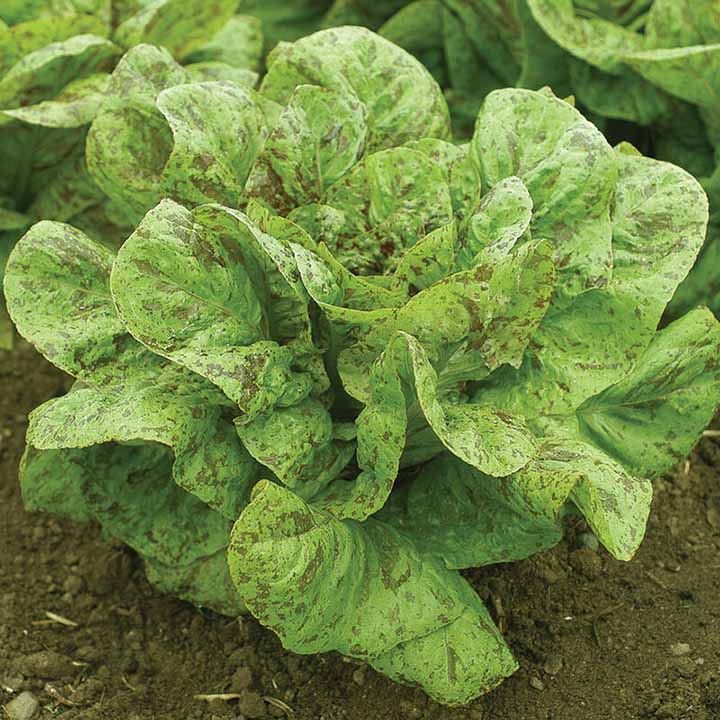
Rouge d’ Hiver
Rouge d’ Hiver – A red romaine

Coastal Star
Coastal star – A green romaine with improved heat tolerance
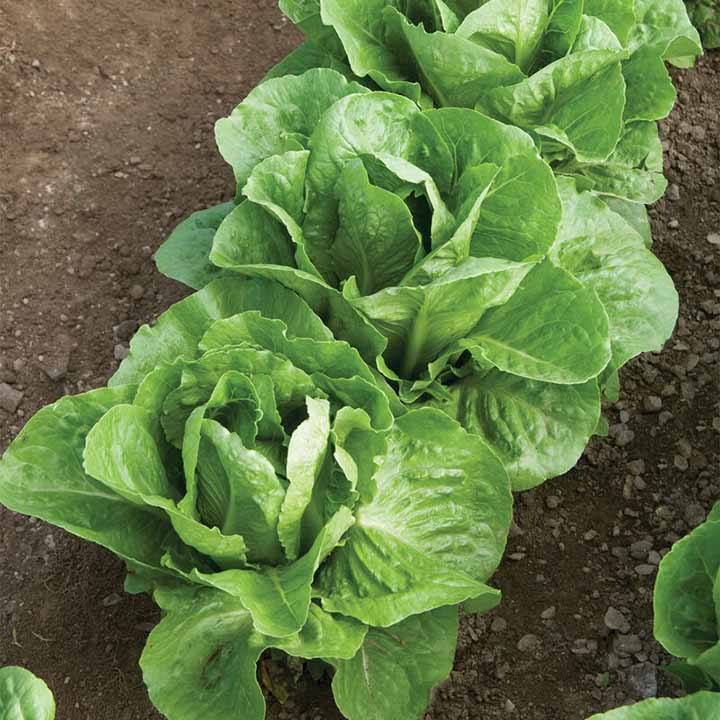
How Long Does Romaine Lettuce Take to Grow?
The amount of time romaine takes to reach maturity depends on the variety and time of year. Most types of romaine take between 45 to 60 days from transplant time to maturity.
If you are planting romaine from seed, it will take 75 to 90 days for plants to reach their full size.
In my experience, baby romaine is typically ready to harvest about three to four weeks after I plant the seeds.
When to Grow Romaine Lettuce?
Romaine lettuce, like most types of lettuce, prefers cool weather. That means it thrives in the fall and spring in most areas of the United States. However, it can be grown over winter in warmer areas.
Additionally, you can grow romaine lettuce in the summer in cooler areas with some modifications.
Remember that most romaine lettuce takes about two months from the time it is transplanted to the time it reaches maturity. This means that if you want to harvest romaine in October, you will need to plant seedlings in August.
If you’re looking for sweet and tasty romaine, I recommend growing it in the spring and fall.
Growing Romaine from Seeds vs. Transplants
One of the questions many gardeners ask is whether they should grow romaine from seeds or transplants.
Although one method isn’t better than the other, the best method will depend on your time, skills, and interests.
Growing Romaine from Seed
If you’re growing romaine from seed, you have two different options. One is to plant the seeds directly in the ground. The other option is to start seeds in containers and then transplant the seedlings outdoors.
Direct Seeding Romaine
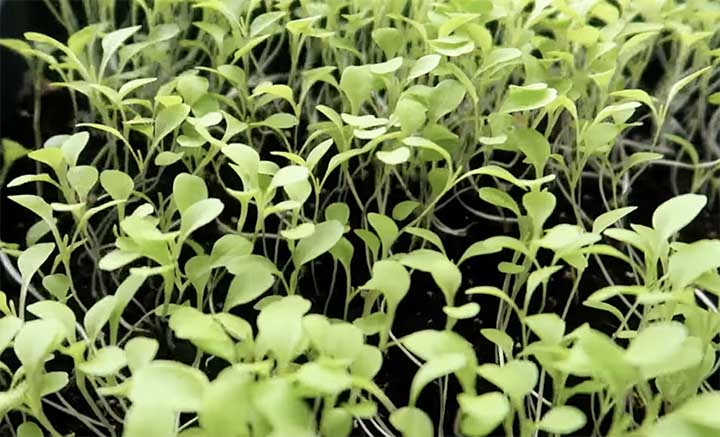
I generally avoid direct seeding unless I’m growing baby romaine.
First, lettuce seeds germinate best at soil temperatures between 60-70ºF. While they can germinate at lower temperatures, germination will take longer. However, seeds experience poor germination at soil temperatures above 85ºF.
Therefore, planting seeds in the ground during the spring means slow germination. And planting them in the late summer means the warm soil may prohibit germination.
When seeds do germinate, the small seedlings will be more susceptible to pests and diseases than bigger plants. Additionally, if you want to guarantee good germination and also proper plant spacing, you will likely need to thin the seedlings after they emerge.
So, when is direct seeding a good idea? When you want to grow a dense stand of baby greens.
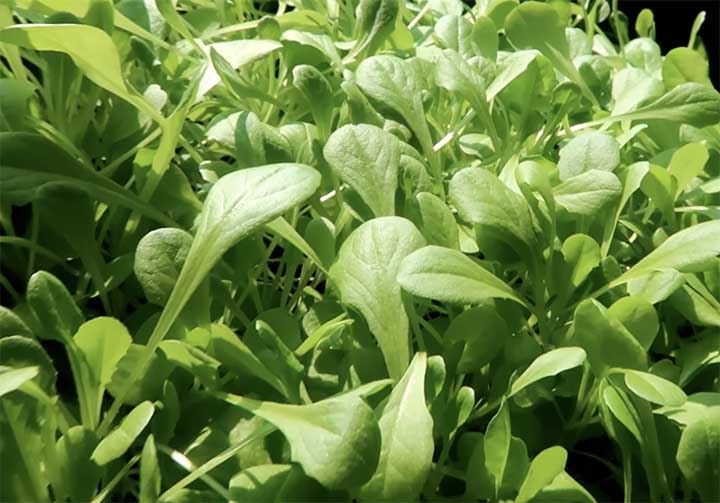
Since these plants are spaced only a few inches apart, it makes sense to direct seed rather than transplant many plants.
When it comes time to plant romaine seeds for baby greens, use a small rake or shovel to dig a furrow that is about half an inch deep and two inches wide. Sprinkle romaine seeds so they are about one to two inches apart, and then cover with about a quarter to half an inch of soil.
After the seeds are planted, water well. Aim to keep the soil moist but not wet until the seeds germinate.
Seeding Romaine for Transplants
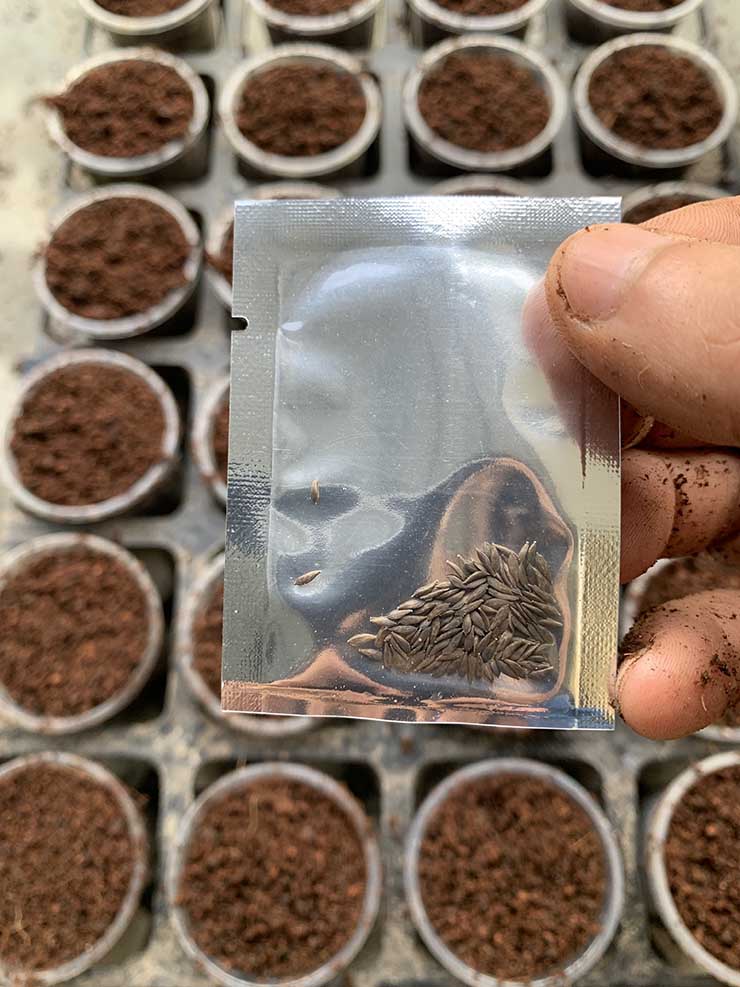
If you want to grow romaine lettuce from seed, another option is to grow transplants. These plants are grown in containers until they reach a certain size. Then, they are planted in an area where they will mature.
I think growing romaine transplants is often a good choice. First, it allows you to control environmental conditions, which increases the likelihood of good germination.
It also allows you to get a jump start on spring growing since you can start seedlings indoors.
While you could buy seedlings, starting your own provides numerous advantages. It allows you to grow varieties of romaine you can’t find at local garden centers and nurseries. And if you’re growing a lot of lettuce, it can help you save money.
Before starting romaine transplants, gather the necessary supplies. This includes a potting mix designed for seed starting, seeds, and containers to hold seedlings.
You can buy specialized trays filled with individual cells for seed starting. If you opt for this route, choose a 10”x20” tray that has either 72 or 50 cells per tray.
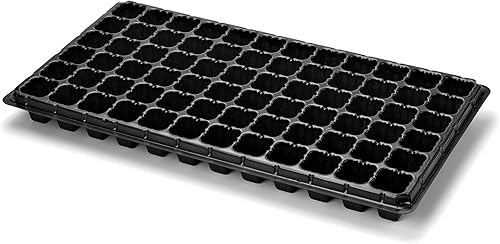
However, you can also use small plastic cups or containers. If you do this, make sure to poke small holes in the bottoms of the containers to allow excess water to drain.
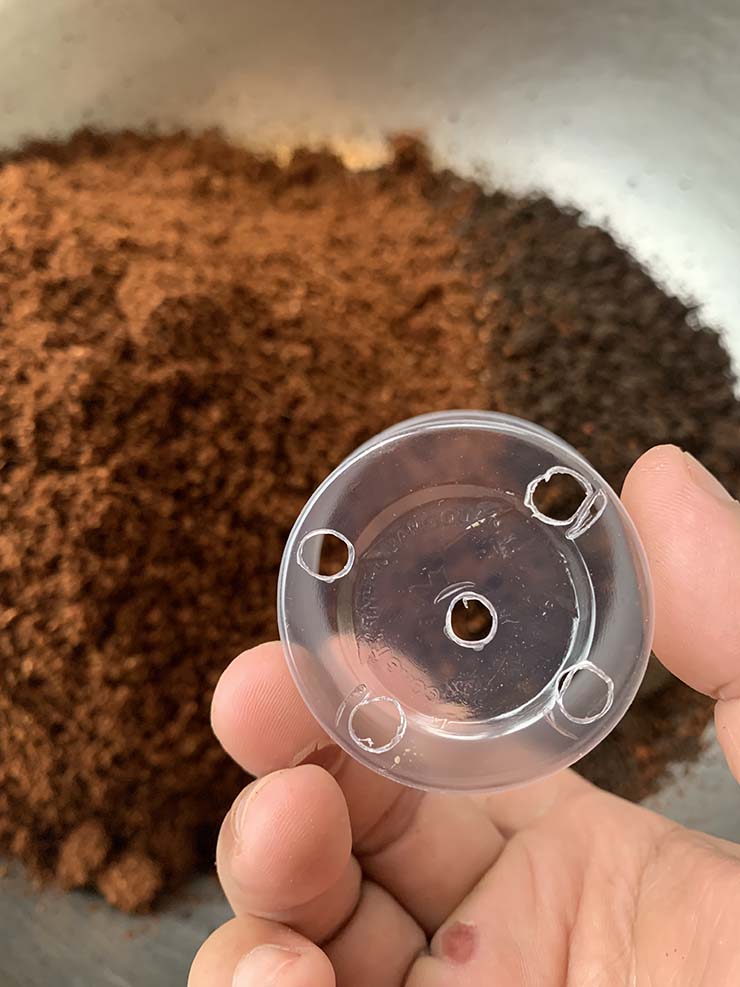
Next, prepare your potting mix by adding water and mixing well. The goal is to have a soil mix that is moist, but not wet.
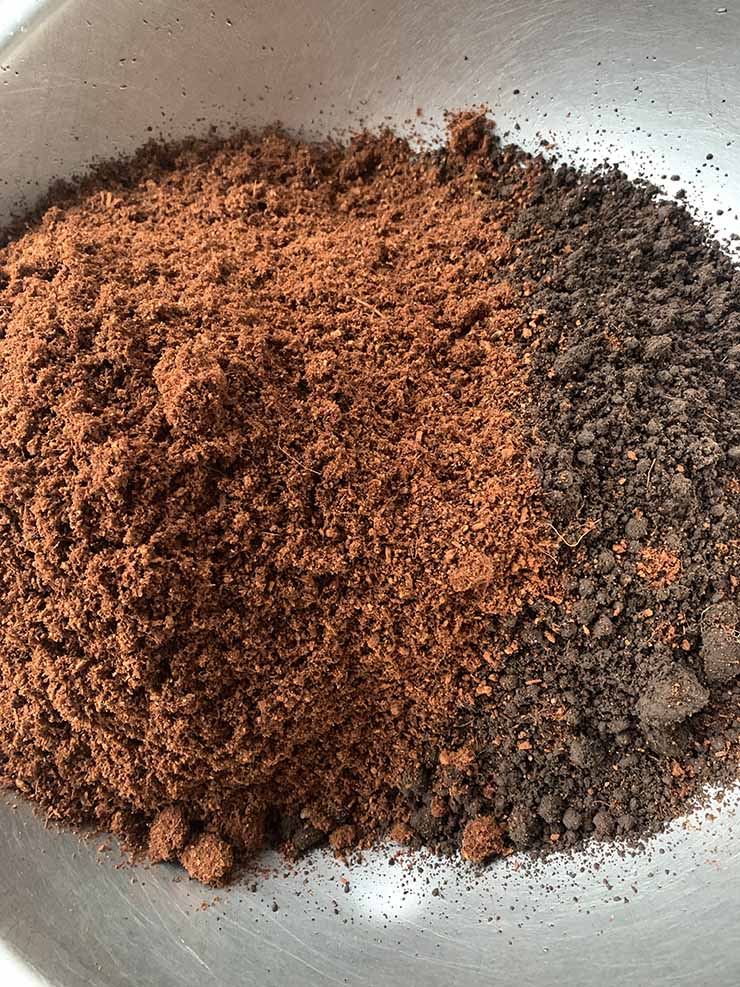

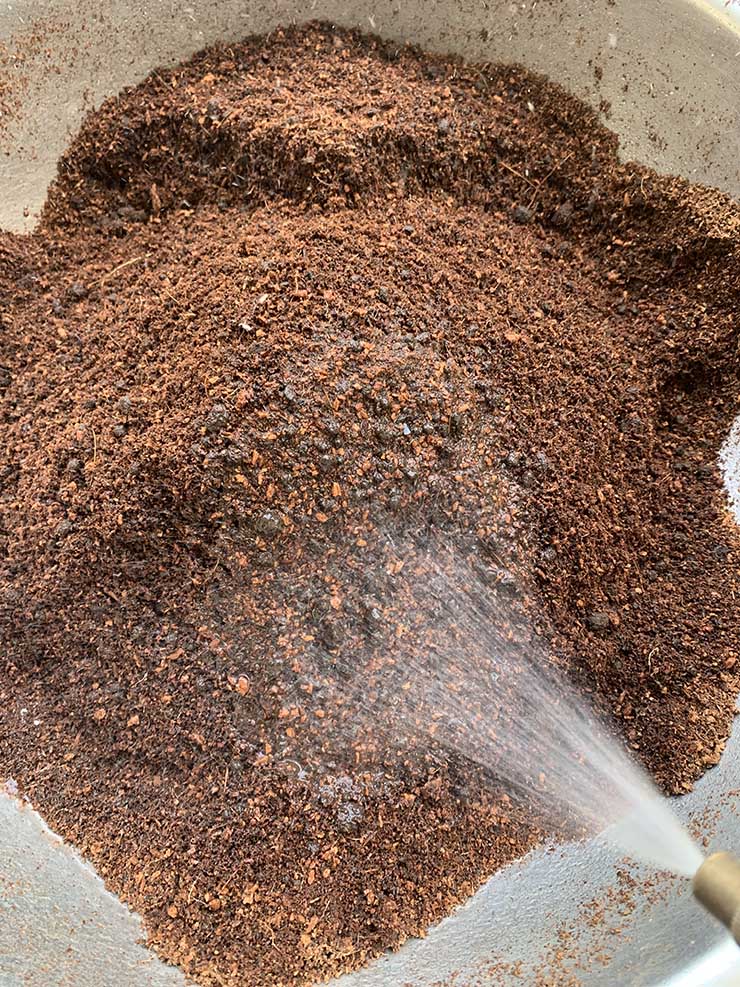

Then it’s time to fill your containers with potting mix. The containers should be all the way full, but not overflowing.

Next, use your finger to make a quarter-inch indent in the soil in each container. Place a seed in each indent, lightly cover with soil, and water well.
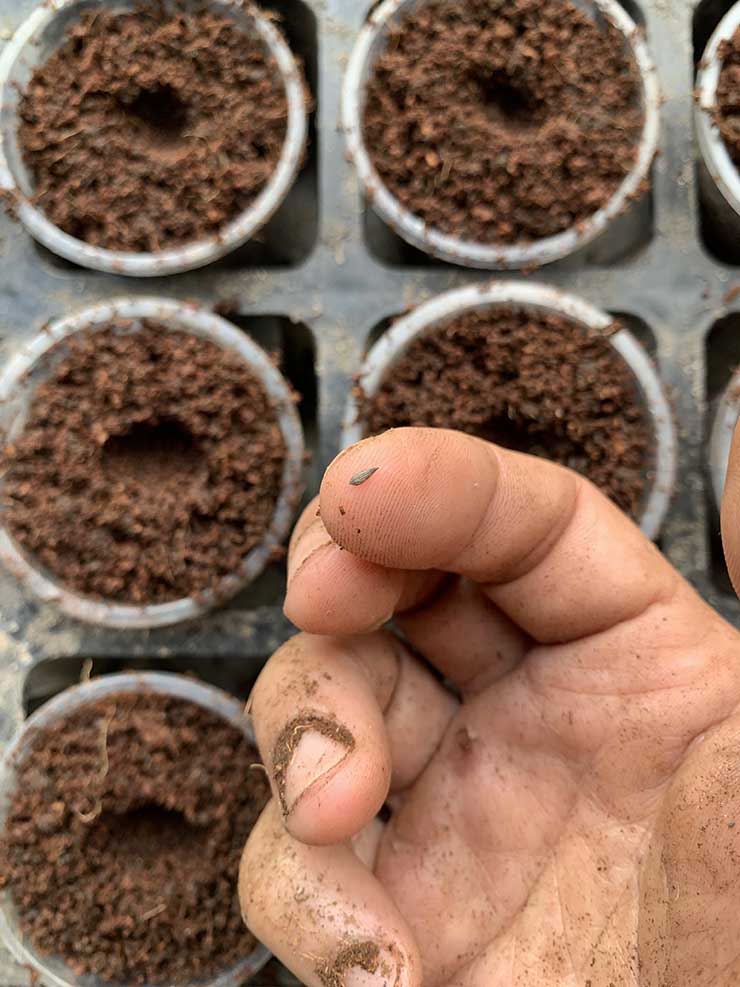
If you want to make planting individual seeds a bit easier, you can look for pelleted lettuce seeds. These seeds are covered in a dissolvable coating that makes separating and handling them easier.

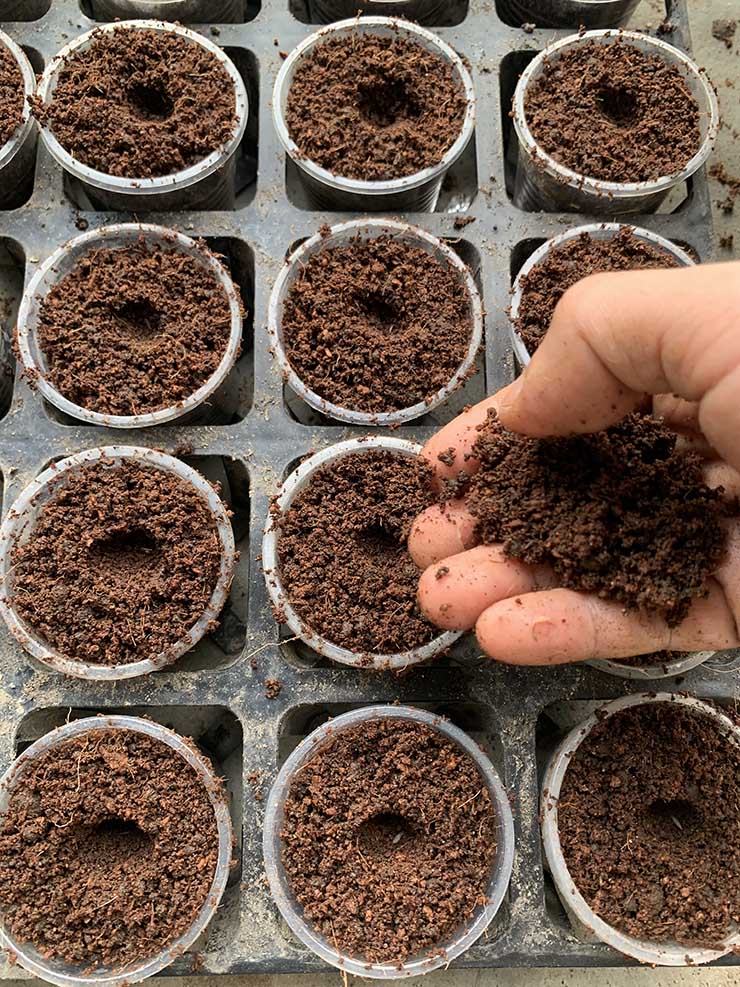
Place the containers somewhere where the temperature is between 60-70ºF, and keep the soil moist. The seeds should germinate in a few days.
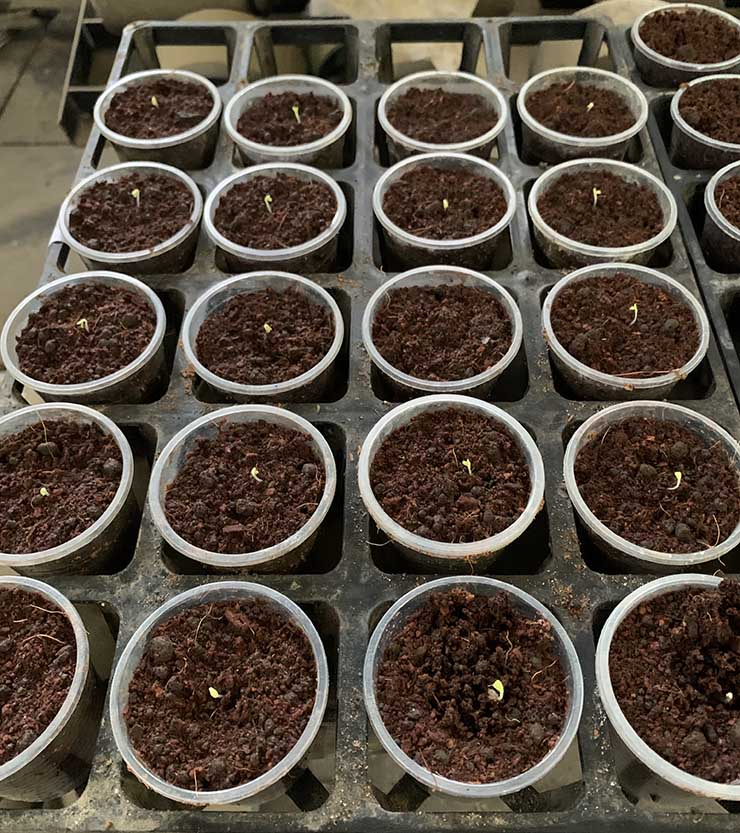

After the seeds have germinated, you will need to ensure that they have access to bright light. If outdoor temperatures are in the range of 50-80ºF, you can place the seedlings outdoors.
However, if it’s cold outside, you should place the seedlings indoors in a brightly-lit window or under grow lights.
No matter if your seedlings are indoors or out, you should keep the soil moist but not saturated. Depending on the soil mix, temperature, light, and container size, you may need to water your seedlings anywhere from a few times a day to once every other day.
About three to four weeks after the seeds have germinated, you can plant them out.
However, before you do so, you should harden off the seedlings. This involves slowly acclimating the plants to outdoor conditions such as temperature and light.
To harden off your seedlings, set them outside in their containers for a few hours to start. You can increase the number of hours the seedlings are outside each day until they spend the whole day and night outside.
Growing Romaine from Transplants

If you don’t want to deal with the extra work of growing romaine from seed, you can purchase seedlings to transplant.
If you purchase seedlings from a garden center, farm, or nursery, you should still harden them off to acclimate them to their new growing environment. Ensure the plants spend a full day outdoors in their seedling trays before planting them in the ground.
Transplant spacing will depend on your growing method, which you can read more about below. However, all romaine seedlings should be planted using the following method.
Dig a hole that is the size of the plant’s root ball. Place the root ball in the hole and gently pack soil around the seedling’s roots.
Ensure that no soil is touching the plant’s leaves and water well.
How to Plant Romaine Lettuce?
There are multiple different ways to grow romaine lettuce. You can plant romaine indoors, outdoors in pots or raised beds, and in an in-ground garden.
Planting Romaine Indoors
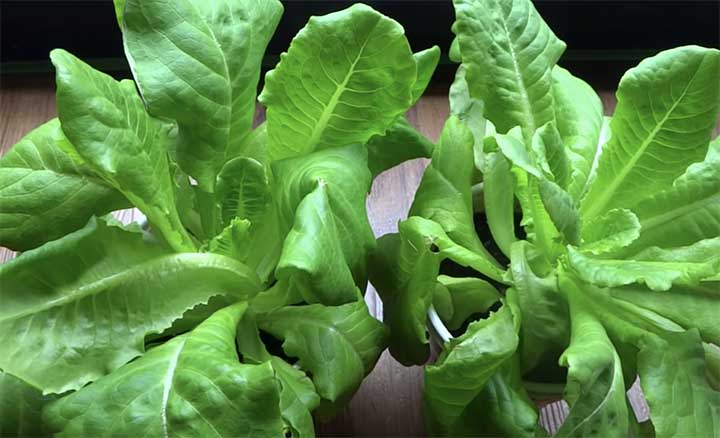
Growing romaine indoors allows you to more easily control variables like temperature, humidity, and pest pressure. However, it also presents unique challenges.
First, is light. Romaine needs at least six hours of bright light each day to thrive.
If you have a south-facing window, placing romaine near the window may provide enough light. However, you may need to utilize a grow light to provide supplemental lighting.
When it comes to the growing method, you can grow in a pot filled with soil or in a hydroponic system. No matter which method you use, you will need to ensure you are providing your plants with the necessary nutrients.
Check out my article if you are interested in growing lettuce indoors.
Planting Romaine in Outdoor Containers

If you have a sunny outdoor area but don’t have a garden area to grow in, you can grow your romaine in containers.
First, you’ll need to choose a proper container. While romaine doesn’t require large pots, each mature plant should have access to at least four inches of potting soil and at least an eight-inch by eight-inch area to expand.
As far as potting soil goes, you should choose a well-draining and rich soil mix. A mix made of peat moss or coco coir, well-aged compost, and perlite is often a good choice.
Aim to keep the soil moist but not saturated. You should also apply a balanced fertilizer once a month—fish emulsion or liquid seaweed are both good options.
Planting Romaine in the Ground or Raised Beds
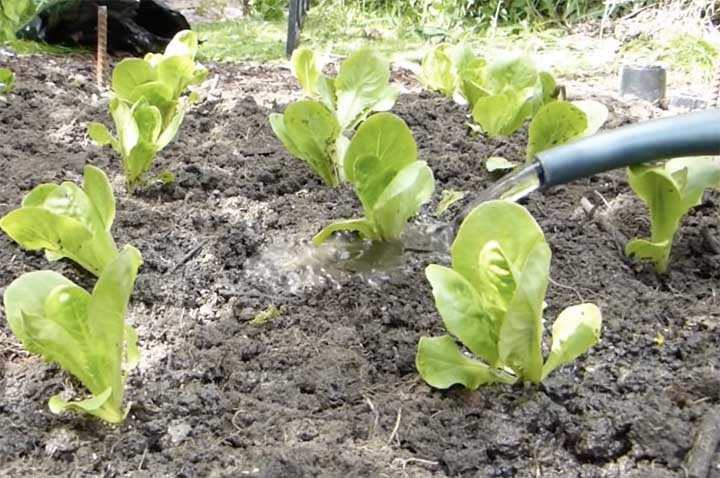
Another way to grow romaine is outdoors in soil — this is the method I prefer, as long as you have access to a garden.
Romaine can be grown directly in the ground in most areas, as long as you amend the soil as necessary.
If you’re growing in a new area, it’s a good idea to start by taking a soil test. Many county extension offices offer soil testing services as do independent soil laboratories.
Soil test results will let you know your soil pH as well as any nutrients that are present. You can then use these results to amend your soil as necessary.
Regardless of the state of your soil, it is often a good idea to mix in an inch or two of well-aged compost into the top few inches of soil. This will provide a boost of beneficial microbes as well as improve both water-holding capacity and drainage.
Once your soil is ready, you can plant your romaine. Planting options include rows, blocks, and individual plants.
If you want to plant multiple heads of romaine, rows are often a good choice. If you opt for this method, space individual plants 12 to 14 inches apart in row and 12 to 18 inches apart in between rows.
For square-foot gardening methods, plant one to two heads of romaine per square foot.
Romaine Lettuce Plant Care
Once you’ve planted your romaine, it’s up to you to provide it with the proper care until it’s time to harvest.
Watering Romaine

Romaine, like other types of lettuce, has relatively shallow roots. That means it cannot reach moisture that is deep in the soil.
Therefore, you should keep the top few inches of the soil moist.
Factors such as soil type, humidity, temperature, and natural rainfall will all impact how often you’ll need to water. With that said, you can expect to provide one to two inches of water a week if conditions are dry.
Before you water, check the moisture in the top inch of soil. If the soil still feels moist, wait to water.
Fertilizing Romaine
Like all plants, romaine requires a wide variety of nutrients to thrive.
This includes the macronutrients nitrogen, potassium, and phosphorus as well as the secondary nutrients calcium, magnesium, and sulfur.
As mentioned above, it’s a good idea to test your soil and correct it accordingly prior to planting. If you do this, you will typically only need to fertilize your romaine one time.

Fish fertilizer will supply romaine with the boost of nutrients it needs to mature.
Protecting from Cold
Romaine lettuce can survive below-freezing temperatures, as long as you provide it with a bit of protection. In fact, you can even overwinter romaine lettuce!
If frost is expected in your area, it’s best to cover your romaine with a fabric row cover. This fabric will help trap heat and also protect the lettuce from drying winds.

When you cover your romaine, ensure the cover isn’t touching the plants. You can use wire hoops to keep the fabric off your plants.
If you don’t have access to row cover, you can cover your plants with a sheet or plastic container. However, be sure to remove these coverings once temperatures rise above freezing.
How to Harvest Romaine?
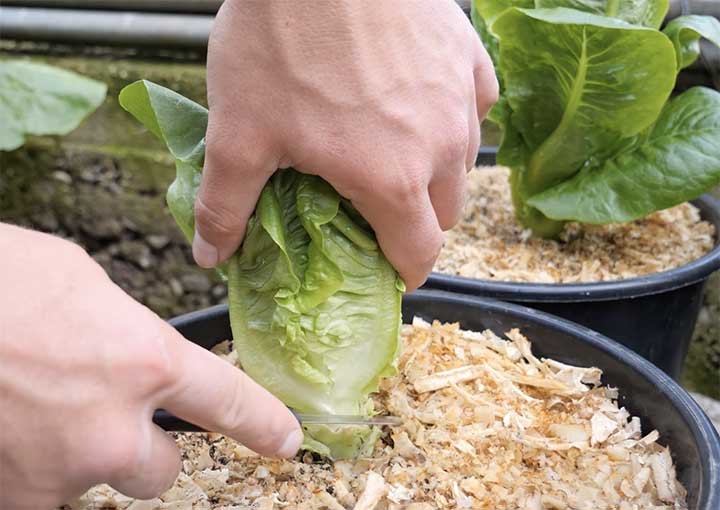
You can harvest your romaine at any size, but a mature head will be nice and firm.
When it’s time to harvest mature romaine, use a sharp knife to cut the romaine near the soil surface.
If you’re growing baby romaine, use a knife to cut the leaves about one inch above the soil surface. The leaves will continue to grow, and you can reharvest again in a few weeks.
I’ve written an article for everything you need to know about harvesting romaine lettuce here.
Common Romaine Lettuce Problems and Solutions
Although romaine lettuce is relatively easy to grow, it is also susceptible to numerous pests and diseases. Here are some common issues to look out for, as well as how to prevent and solve them.
Slugs
Slugs can be a big problem with all types of lettuce, including romaine. They can quickly chew holes in lettuce and even devour an entire plant.
These posts occur most frequently in moist conditions. They are also more common in areas where there are lots of weeds or plant debris, as these provide protection.
If you notice slugs on your lettuce plants, you can pick them off and place them in a dish of soapy water. Sprinkling diatomaceous earth around the base of your plants may also help keep these pests off your lettuce.
However, if outbreaks become severe, you may want to turn to a commercially available slug bait and poison – Sluggo.
You can read my article for everything you need to know about controlling slugs in the garden.
Aphids
These sap-sucking pests may be small, but they can quickly do serious damage to romaine plants. They use their piercing mouthparts to suck out plant sap, which can limit growth and also spread disease.
Aphids can rapidly multiply, which means a single lettuce head can quickly become covered with hundreds of aphids. Not only does this mean damage to the plant, but it can also make it difficult to separate aphids from the lettuce when it’s time to harvest.
Another thing to note about aphids is that they often attack the interior leaves. That means you may not notice the aphids until you harvest the lettuce.
With that said, if you do notice aphids, you can do a few things to get rid of them. Small numbers can be sprayed off with water, and larger infestations can be sprayed with insecticidal soap or neem oil.
You can also help prevent aphid outbreaks by maintaining a healthy population of beneficial insects like ladybugs, hoverflies, and lacewings. Planting a diverse array of plants and avoiding broad-spectrum pesticides can help these good buys prevail.
Bolting

Bolting refers to when lettuce plants transition from a vegetative growth phase to a reproductive phase. You will notice your romaine is bolting when it begins to send up a flower stalk.
Although bolting is a natural plant process and not necessarily a bad thing, it does make romaine bitter. Therefore, you should aim to harvest your romaine before it bolts.
Once romaine begins to bolt, there’s nothing you do to stop the process. However, there are some steps you can take to prevent bolting from starting.
Bolting occurs when certain environmental conditions appear. Lettuce plants frequently bolt when high temperatures and long days appear, but drought stress can also start the flowering process.

If you are growing romaine in the summer, you can help prevent bolting by shading your plants. Tucking romaine under tall plants like tomatoes or covering lettuce with shade cloth are both good options.
Root Rot
Root rot refers to a group of fungal diseases that infect plant roots. While romaine roots develop root rot, they have a difficult time taking up water and nutrients.
Some signs of root rot are soft and mushy roots and/or wilting plants.
Although root rot can occur in a variety of conditions, it is more likely to occur in wet soils. Therefore, the best way to prevent root rot is to ensure your soil is well-draining and only water when the soil is dry.
Bonus Tips to Grow Romaine Lettuce for Maximum Harvest
Now that you’ve got the rundown on how to grow romaine, keep these special tips in mind.
Pay Attention to Soil pH
Even if you add nutrients to the soil, they will be unavailable to plants at the wrong pH.
Aim to keep the soil pH between 6.0 and 6.5. Lime can help raise pH while sulfur will lower pH.
Consider Companion Planting
Planting your romaine with other crops will help increase biological diversity which in turn can increase plant health.
Tall plants like peppers and tomatoes provide a bit of shade, and peas and beans can provide the soil with nitrogen.
For a detailed lettuce companion plants guide, you can read my article here.
Ensure Adequate Spacing
Spacing your plants far enough apart does more than ensure they have enough room to grow. It also allows for adequate airflow to help prevent disease. I’ve written a detailed guide about lettuce spacing here.
Aim to Harvest During Cool Temperatures
Romaine will be the sweetest when you harvest it during cool weather. That means planting romaine in the late summer and early fall so you can harvest it throughout the fall and winter.
Starting transplants indoors in the spring also allows you to get a jump on the growing season. This way, you can plant lettuce outdoors as soon as temperatures are constantly above freezing.
